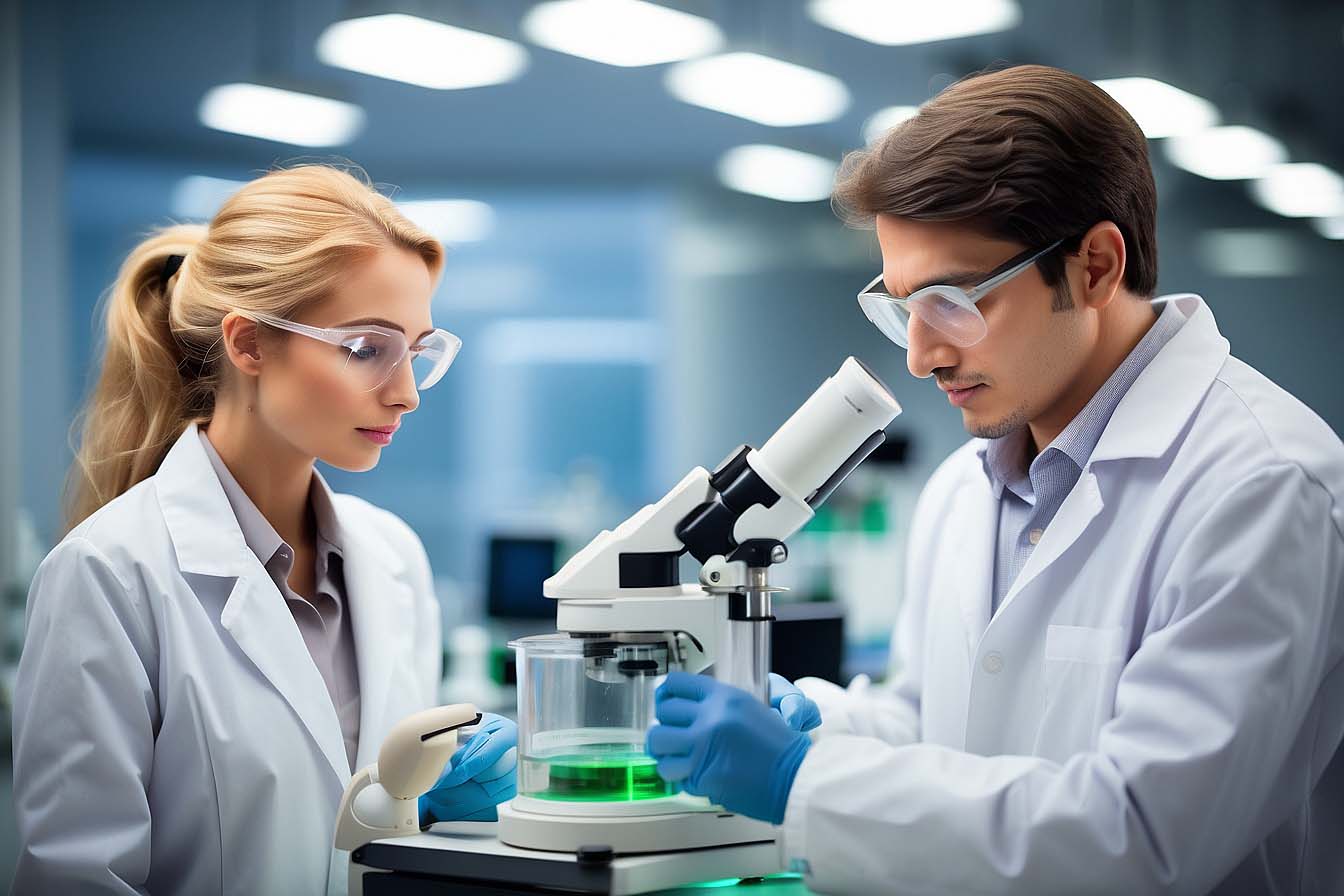

 Applications of Nano Technology in Biotechnology
Applications of Nano Technology in Biotechnology
Table of Contents
1. What is Biotechnology?
2. Key aspects of biotechnology
2.1 Genetic Engineering
2.2 Recombinant DNA Technology
2.3 Bioprocessing
2.4. Biomedical Engineering
2.5. Environmental Biotechnology
2.6. Agricultural Biotechnology
2.7. Industrial Biotechnology
3. Contribution of Nano Technology in Biotechnology?
3.1 Drug Delivery Systems
3.2 Diagnostic Tools
3.3 Gene Delivery and Therapy
3.4 Tissue Engineering
3.5 Nano-based Vaccines
3.6 Bio sensing and Detection
3.7 Regenerative Medicine
What is Biotechnology?
Biotechnology is a broad field that involves the use of biological systems, organisms, or derivatives to develop or create new products and applications for various purposes. It merges biology with technology to address challenges and create innovations in areas such as healthcare, agriculture, food production, and environmental management.
Key aspects of biotechnology include:
1. Genetic Engineering: Manipulation of an organism’s genes to achieve desired traits or outcomes. This can involve the insertion, deletion, or modification of specific genes.
2. Recombinant DNA Technology: Combining DNA from different sources to create new genetic combinations. This technique is widely used in the production of medicines, vaccines, and genetically modified organisms.
3. Bioprocessing: Using biological systems such as cells or enzymes to produce desired products on a large scale. This can include the production of pharmaceuticals, biofuels, and various industrial chemicals.
4. Biomedical Engineering: Applying principles of engineering to biological systems for medical purposes. This includes the development of medical devices, tissue engineering, and genetic therapies.
5. Environmental Biotechnology: Applying biological processes to solve environmental problems, such as waste treatment, pollution control, and resource conservation.
6. Agricultural Biotechnology: Developing genetically modified crops with improved traits such as resistance to pests, diseases, or environmental conditions, to enhance agricultural productivity.
7. Industrial Biotechnology: Using biological systems for industrial applications, such as the production of bio-based materials, biofuels, and biochemicals.
Biotechnology has a significant impact on various industries, contributing to advancements in medicine, agriculture, and industry. It plays a crucial role in addressing global challenges, improving human health, and promoting sustainable practices.
Contribution of Nano Technology in Biotechnology
Nanotechnology has made significant contributions to biotechnology, offering innovative tools and techniques that have revolutionized various aspects of the field. Here are some key contributions of nanotechnology to biotechnology:
1. Drug Delivery Systems:
-Nano-sized drug delivery systems, such as nanoparticles and liposomes, allow for targeted and controlled drug delivery. This enhances the therapeutic efficacy of drugs while minimizing side effects.
-Nano carriers can be designed to encapsulate drugs and deliver them specifically to targeted cells or tissues, improving the precision of treatment.
2. Diagnostic Tools:
-Nano scale materials are used in the development of highly sensitive diagnostic tools, such as biosensors and imaging agents.
-Quantum dots, for example, are nanoparticles that emit specific wavelengths of light, making them useful for imaging and diagnostics. They have applications in the detection of biomolecules and imaging biological structures at the cellular and molecular levels.
3. Gene Delivery and Therapy:
-Nanotechnology has facilitated the development of efficient gene delivery systems. Nanoparticles can be designed to carry and protect genetic material, aiding in gene therapy applications.
-Nano carriers can help overcome biological barriers and deliver therapeutic genes to specific cells, offering potential treatments for genetic disorders and other diseases.
4. Tissue Engineering:
Nano materials play a crucial role in tissue engineering by providing scaffolds with specific physical and chemical properties. These scaffolds can support cell growth, differentiation, and tissue regeneration.
-Nanoparticles and nano fibers can mimic the natural extracellular matrix, providing a conducive environment for cells to organize and form functional tissues.
5. Nano-based Vaccines:
-Nanoparticles are used in vaccine development to enhance immune responses. They can serve as carriers for antigens or adjuvants, improving the effectiveness of vaccines.
-Nano-vaccines can be designed to elicit specific immune responses, offering potential solutions for preventing and treating infectious diseases.
6. Bio Sensing and Detection:
-Nanotechnology has enabled the development of highly sensitive biosensors for the detection of biomolecules, pathogens, and toxins.
-Nano materials, such as carbon nanotubes and gold nanoparticles, are utilized in biosensors to enhance sensitivity, selectivity, and response times.
7. Regenerative Medicine:
-Nanotechnology contributes to regenerative medicine by providing platforms for controlled drug release and promoting tissue regeneration.
-Nano materials can be incorporated into biomaterials and scaffolds to enhance their properties, allowing for the creation of artificial organs or supporting the repair of damaged tissues.
In summary, nanotechnology has opened up new possibilities in biotechnology, offering tools and materials that enable more precise and effective approaches in drug delivery, diagnostics, gene therapy, tissue engineering, vaccine development, bio sensing, and regenerative medicine. These advancements hold great promise for improving human health and addressing various medical challenges.
To Know Details of Nano Technology